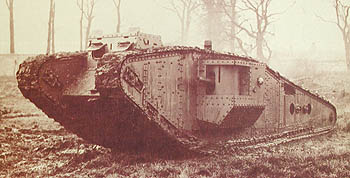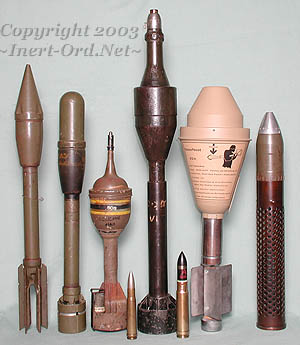|
Historical Background During World War I, the appearance of the tank on the battlefields of Europe was met with some degree of skepticism. How to best apply this new weapon and its ultimate effectiveness was not clear. The tank proved most useful as a siege weapon against the trenches. Their job, to break through dense barbed wire obstacles and open a path for the infantry. Then, as self-propelled gun platforms, to clear machine gun positions and provide fire support. |
|

|
Used in this manner the tank was
always in range of enemy big guns. Infantry rarely needed to deal with them
directly, as conventional artillery proved to be a most effective tank
killer. However, tanks were vulnerable to lesser weapons as well, since maximum all around armor protection was not practical, due to weight limitations. |
 Image Courtesy of CannonRest |
Mauser M1918 AT Rifle Weight: 15.9kg (35lbs) Barrel Length: 130cm (51") Muzzle Velocity: 915m/s (3000ft/sec) Penetration: 25mm (1") @ 65m (70yds) |
| Since artillery support
was not always at hand, German soldiers were provided with their own defensive capability
and one form was the Mauser M1918, 13.2mm Anti-Tank Rifle. The large bolt-action
rifle proved effective, although its horrendous recoil was not well received
by the troops who had to use it. Since Germany was late to develop tank technology,
the Allies never adopted a comparable weapon of their own, but were quick
to realize the need to have one as the tank was a certain future threat. From these experiences, most designers were led to the conclusion that an adequate anti-tank weapon, for platoon level infantry, would be a magazine-fed rifle, firing a hard-core high velocity round of approximately 12-14mm caliber. With that in mind, development of an effective anti-tank weapon was pursued by many nations during the 1920's and 30's. The British developed the Boys .55cal AT rifle. The American's decided on the Browning .50cal heavy machine gun. A few countries opted for more firepower and created some massive 20mm weapons Anti-tank rifle grenades, using the newly developed "hollow charge" technology was another option. While limited in size and accuracy, rifle grenades had the advantage of light weight with no need for a specialized weapon to fire it. Germany favored this approach. (German Rifle Grenades) However, with the beginning of WWII the big anti-tank rifle was quickly rendered obsolete. Fielding the heavy and unwieldy guns was not effective when confronted with fast moving and well armored modern tanks. Infantry, without artillery support, was now at a distinct disadvantage. The need for an adequate replacement for the anti-tank rifle was acute. The tremendous potential of the "hollow charge" (a.k.a. "shaped charge") warhead would be key to the development of a new class of artillery... the shoulder launched anti-tank weapon. -ej |
|
